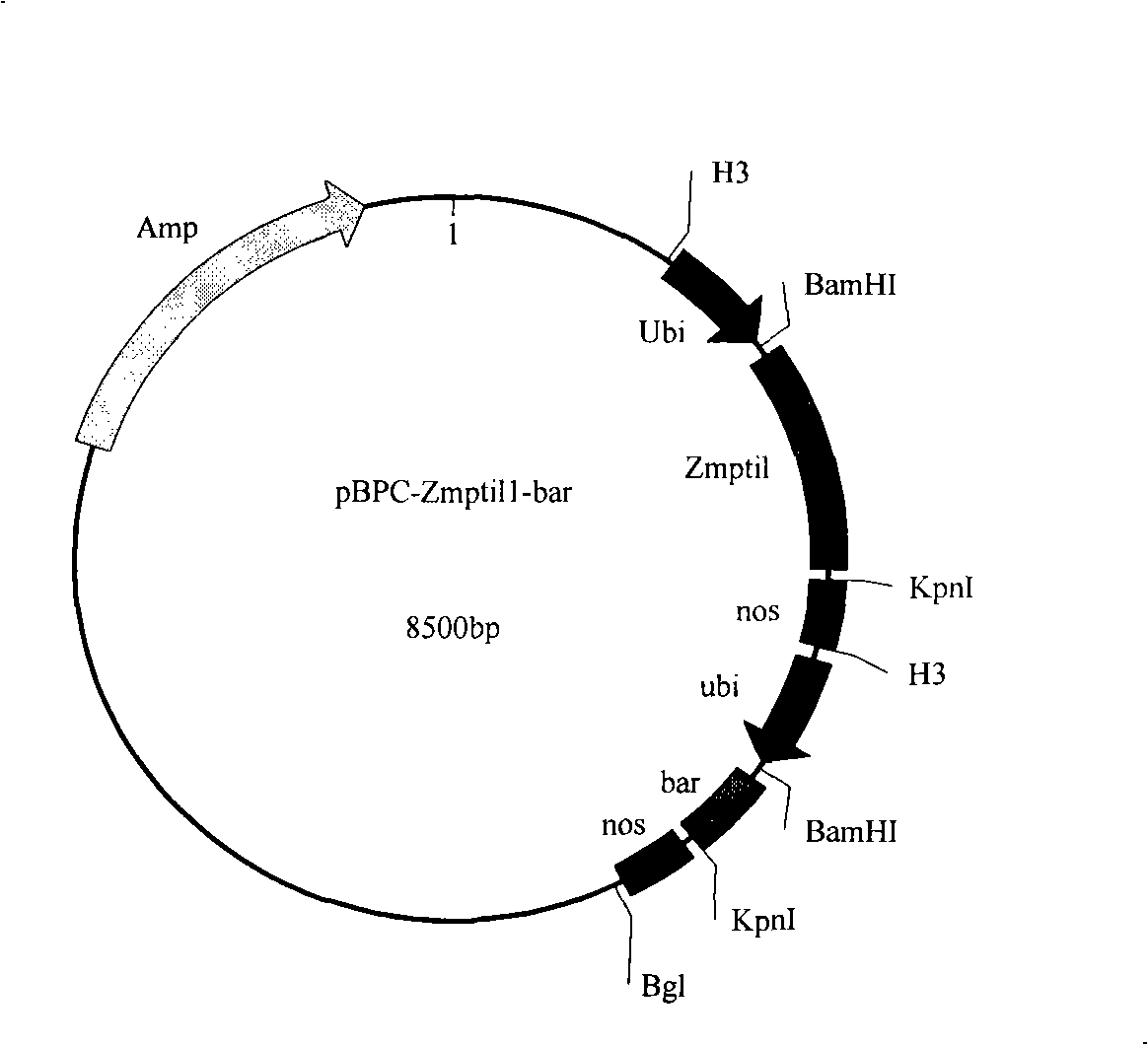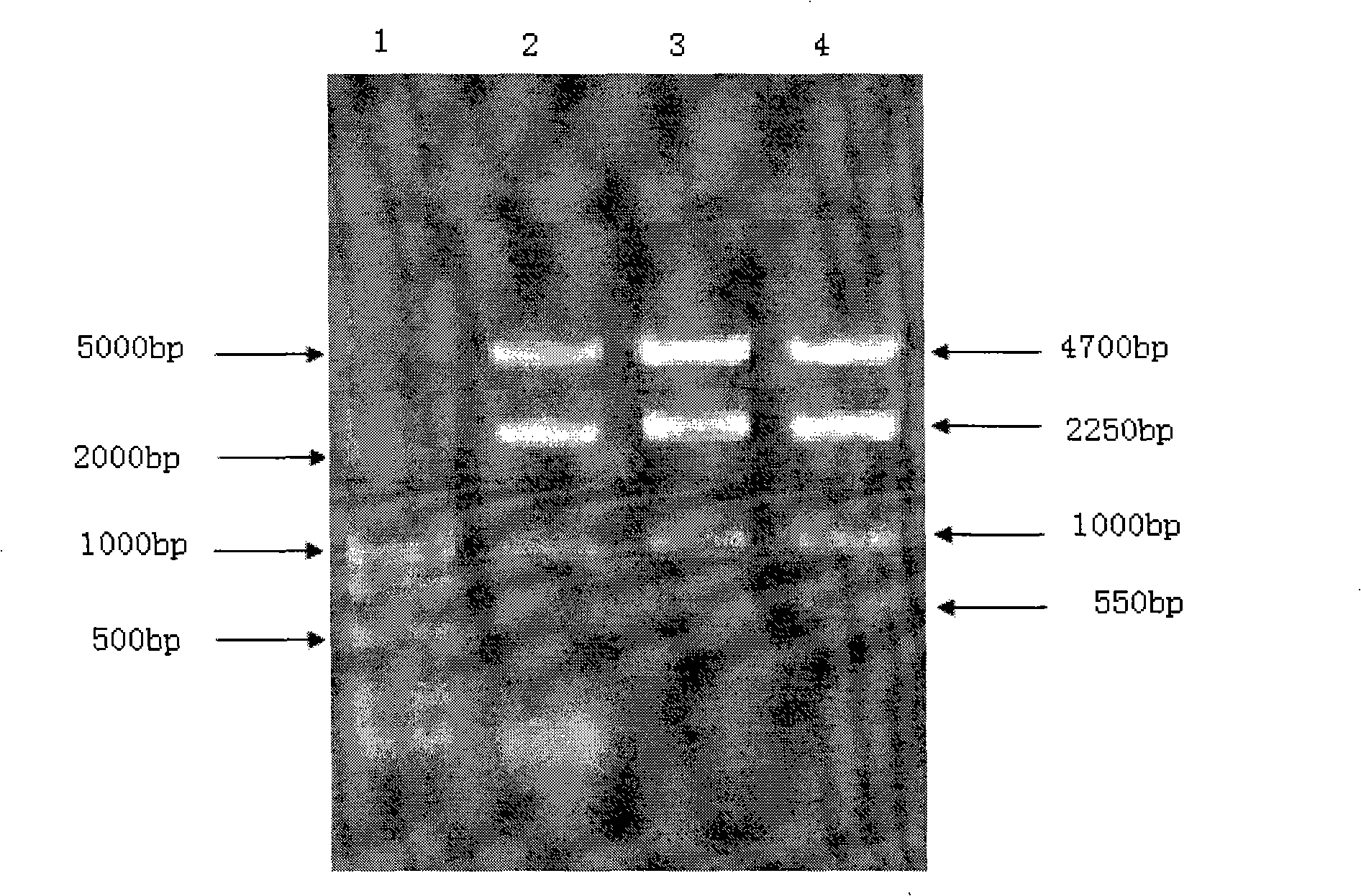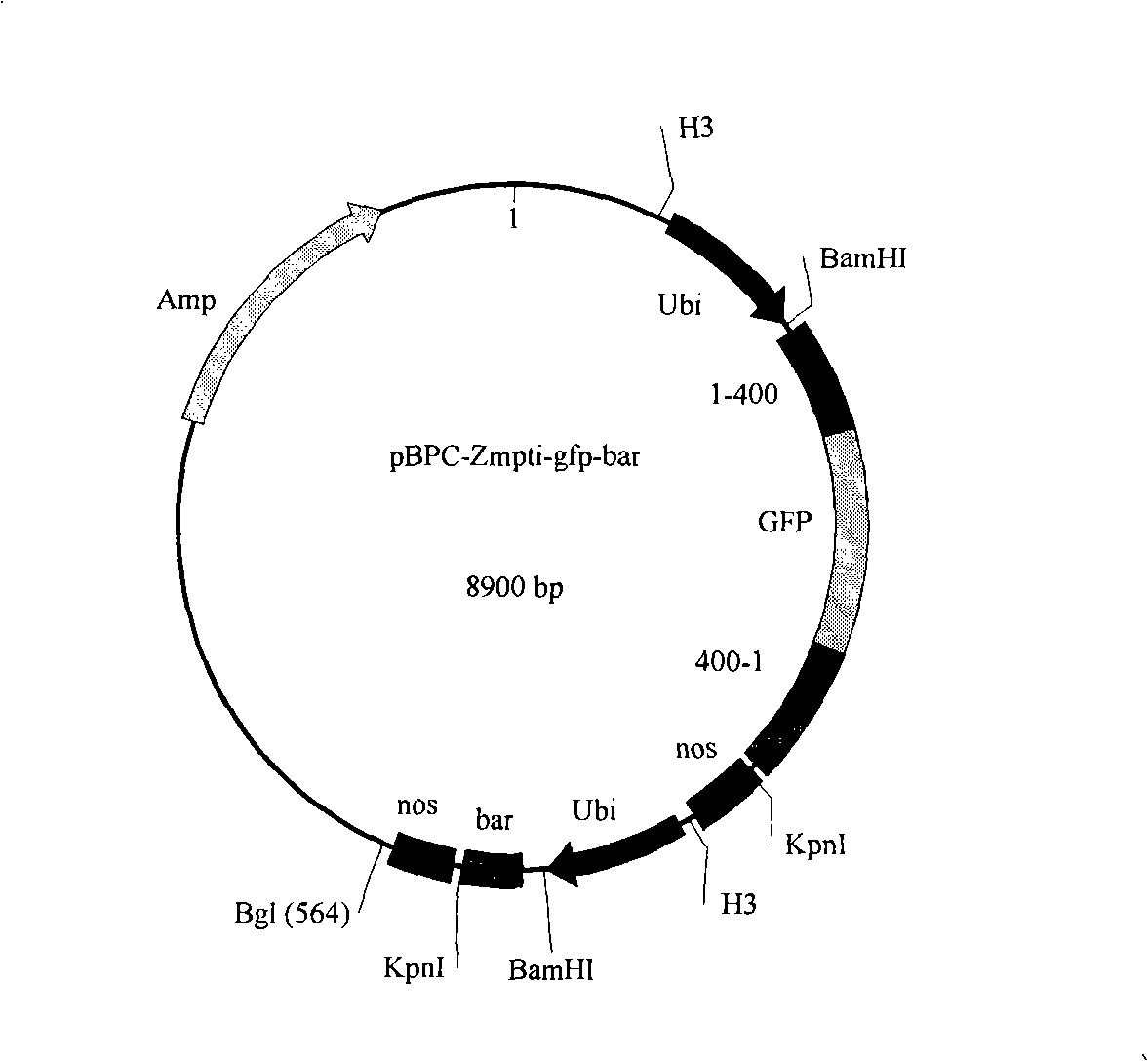Method for cultivating disease-resistant maize
A cultivation method and corn technology, applied in the directions of botanical equipment and method, biochemical equipment and method, application, etc., can solve problems such as affecting the growth and yield of corn, and achieve the effect of easy popularization, high speed, and speeding up the breeding process.
- Summary
- Abstract
- Description
- Claims
- Application Information
AI Technical Summary
Problems solved by technology
Method used
Image
Examples
Embodiment 1
[0022] Example 1: Construction and identification of plant expression vectors
[0023] The basic materials in this example are: plasmid pBPC-p5cs-F129A, with Ubiquitin promoter, ampicillin and bar gene selection marker; plasmid pGreen0029-ZmPtil-gfp, with ZmPtil gene (accession number in Genbank is AY708048) and gfp gene.
[0024] The construction method of the plasmid pBPC-p5cs-F129A can be found in the article "Research on the introduction of p5cs gene into tall fescue by gene bombardment" (Li Zhiliang et al., Acta Horticulture, 2005, 32: 653-657); the plasmid pGreen0029- For the construction method of ZmPtil-gfp, please refer to the article "The Location of Corn Protein Kinase ZmSPK1 in Transgenic Arabidopsis" (Xiao Xue et al., North China Agricultural Journal, 2006, 21(3): 1-4).
[0025] A: Construction and identification of the plant sense expression vector
[0026]The plasmid pGreen0029-ZmPtil-gfp was double digested with BamHI and KpnI to obtain a fragment with a size of ab...
Embodiment 2
[0051] Example 2: Transformation by pollen tube channel method
[0052] The maize inbred line 178 was selected as the recipient, and normal-developed plants were selected from the recipient inbred line population during the flowering period for bagging selfing. For specific methods, refer to the paper "Study on Directly Introducing Soybean DNA into Corn Inbred Lines" (Qi Yonghong . Maize Science, 2000, B(1): 34-36.). Introduce within 4-24 hours after pollination. The operation method is: first remove the paper bag from the ear, and use scissors to cut off the silk and bracts about 1-2 cm from the top of the cob, and keep the cut surface of the silk even. And make the filaments in the bracts slightly higher than the bracts. Then use a disposable needle tube to instill 100 μl of plasmid solution with a concentration of 500 ng / μl on the incision, and immediately put the paper bag on again, recording the time of introduction and the name of the plasmid. When the corn ears are mature, ...
Embodiment 3
[0055] Example 3: Preliminary screening of resistance of transformed plants
[0056] A. Detection method:
[0057] The harvested seeds are sown in a seedling tray in an artificial climate chamber, and the culture medium is vermiculite. When T 0 When the generation plant grows three leaves and one core, the core leaves are smeared with a herbicide with a concentration of 0.1%, and the herbicide can be glufosinate.
[0058] B. Test results:
[0059] Figure 5 The following shows the selection of resistant plants after applying the herbicide for one week: Figure 5 -A is non-resistant plants, Figure 5 -B is non-resistant plant leaves, Figure 5 -C is a resistant plant, Figure 5 -D is the resistant plant leaves. by Figure 5 Shown: most of the plant leaves where the herbicide was applied showed a yellow spot, and the periphery of the yellow spot spread to the base of the leaves in a dry shape ( Figure 5 -A, 5-B); the non-transgenic control plants have similar symptoms as above, and...
PUM
 Login to View More
Login to View More Abstract
Description
Claims
Application Information
 Login to View More
Login to View More - R&D
- Intellectual Property
- Life Sciences
- Materials
- Tech Scout
- Unparalleled Data Quality
- Higher Quality Content
- 60% Fewer Hallucinations
Browse by: Latest US Patents, China's latest patents, Technical Efficacy Thesaurus, Application Domain, Technology Topic, Popular Technical Reports.
© 2025 PatSnap. All rights reserved.Legal|Privacy policy|Modern Slavery Act Transparency Statement|Sitemap|About US| Contact US: help@patsnap.com



